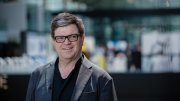The new annual letter of Dean Jeremy R. Knowles to the Faculty of Arts and Sciences (FAS), disseminated in February (www.fas.harvard.edu/~secfas), addresses "curricular planning" ("what we teach and how we teach it") and "space planning." In discussing those subjects and others, Knowles appears to be planting the seeds for a broad rethinking, in the near future, of what FAS is and does.
In one perspective, curricular planning is simply the contents of the annual Courses of Instruction catalog. Knowles comments on four course components. He hopes to see the number of freshman seminars (59 this year, up from 35 last year) doubled, and more taught by ladder faculty members. The aim is to offer all entering students close academic contact with a scholar while examining a subject of mutual interest, without interruption from highfalutin upperclassmen. In the Core curriculum, efforts continue to increase the number of courses, to assure students choice and spread enrollments out more evenly. But Knowles also raises anew the idea of reducing the number of required Core courses by one, to seven--which would make it easier for students to enroll in a freshman seminar or other elective, and might serve as an example to departments with especially onerous concentration requirements.
The remaining components of the curriculum are the College concentrations and the courses available to graduate students. In place of the prevailing "sense that each of these four curricular elements has to compete with the others" for scarce faculty time, Knowles hopes for "a more ideal world" where every department would "see all four of these areas as part of our collective obligation," not as "the accidental consequence of individual faculty benevolence."
Hence, curricular planning. Beginning last autumn, all departments have been asked to project their course offerings for the next three years, including information on who might teach each, and also on what retirements or leaves are anticipated--matters necessitating a search for a new appointment or a visiting professor, if another member of the department cannot temporarily take a course on. Although such information exists in some departments, in many, remarkably, it does not, making it hard for anyone to count on a predictable course of study.
That ignorance has baneful effects on several FAS constituencies, and so curricular planning is also, fundamentally, a human-resources problem. Now that graduate students have guaranteed offers of financial support that include teaching experience, the obligation exists to provide "intellectually relevant teaching opportunities," and therefore a stable course schedule. Students, "often not knowing if a particularly enticing course will ever be offered again," or struggling to satisfy requirements, may have to make suboptimal selections. Faculty members, who might enjoy a more generous leave policy to pursue research (perhaps a paid semester every three years, rather than paid leaves alternating with unpaid leaves, often of little use to those in the humanities and the social sciences), could expect the dean's favor if he knew the available teaching resources--the decisive factor, Knowles says. Searches, an arduous process, could be launched in a more timely way. And so on.
That important housekeeping attended to, Knowles hints he has something more expansive in mind. He writes that the faculty "must rethink what is essential for each of the undergraduate concentrations." Now that faculty members have examined the Core curriculum, language requirements, and freshman seminars in recent years, and the prospects for study abroad this year, is there an appetite for some more comprehensive review of the College academic experience? Indeed, the dean says, "classroom offerings" must be planned "holistically," and attention paid to "the balance between the fraction of undergraduate courses that we mandate and the fraction that our students elect," to remedy concern about excessive concentration requirements. He also hints that along with repairing academic advising (see page 68), the faculty ought to examine the "balance between [students'] academic work and their commitments outside the classroom"--another very big question for future FAS study.
Any review of curriculum and faculty resources leads immediately to space planning. Happily, after three nearly static decades (see "Elbow Room," March-April 2001, page 61), the professoriate has begun growing again (from 603 professors in 1998-1999 to 637 now), particularly in the junior ranks. The bad news is that they, and the several dozen new positions hoped for this decade--guided in part by curricular planning--urgently need more room, particularly for scientific laboratories. And so the most ambitious agenda for new construction in a generation or more is in the offing. The University's long-term growth prospects in Allston aside, Knowles highlights the first two laboratory buildings envisioned for the North Precinct (beyond the Museum of Comparative Zoology and the existing science buildings), planning for which can begin as soon as an underground parking garage is under way, later this year. Together with the center for government and international studies and a proposed new physical-sciences building (which may enter construction in 2003, a year later than first forecast, pending design and financing issues), plus many other projects rising, on the drawing boards, or wished for this decade as well, those schemes would transform the look, location, and layout of much of FAS's research and teaching space in relatively short order.
Surprisingly, after a decade of robust financial health for the University, realizing those plans may be constrained as much by money as by the arduous process of community review and permitting in Cambridge. Knowles ends his letter by noting that the faculty, which now receives 41 percent of its revenue from endowment distributions, will record a third consecutive surplus in this fiscal year--but that the endowment payout for the next fiscal year will rise only 2 percent, and perhaps by a like amount in succeeding years. That would be the smallest increase in memory, and a sharp change from the 28 percent and 21 percent boosts in recent fiscal years. So FAS, in pursuing its goals, can expect to draw down its surpluses from 2000-2002, apply overhead funds from research grants to pay for laboratories, borrow, and--inevitably--solicit support from alumni who share its vision.





